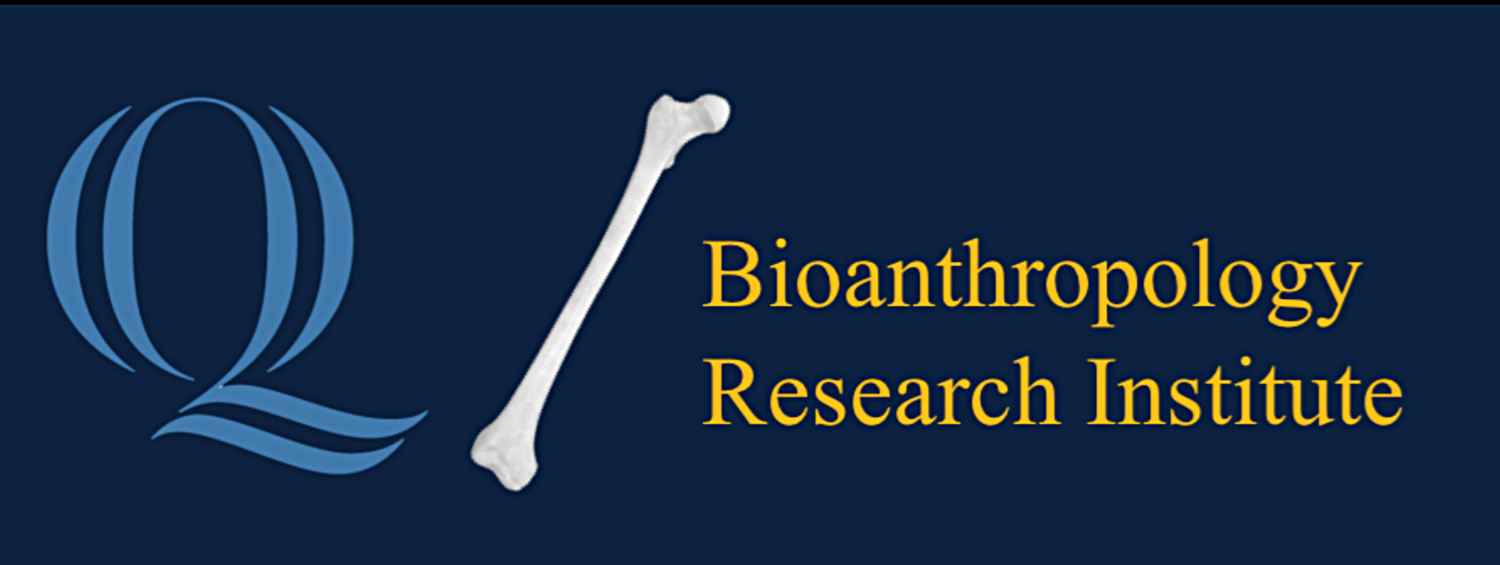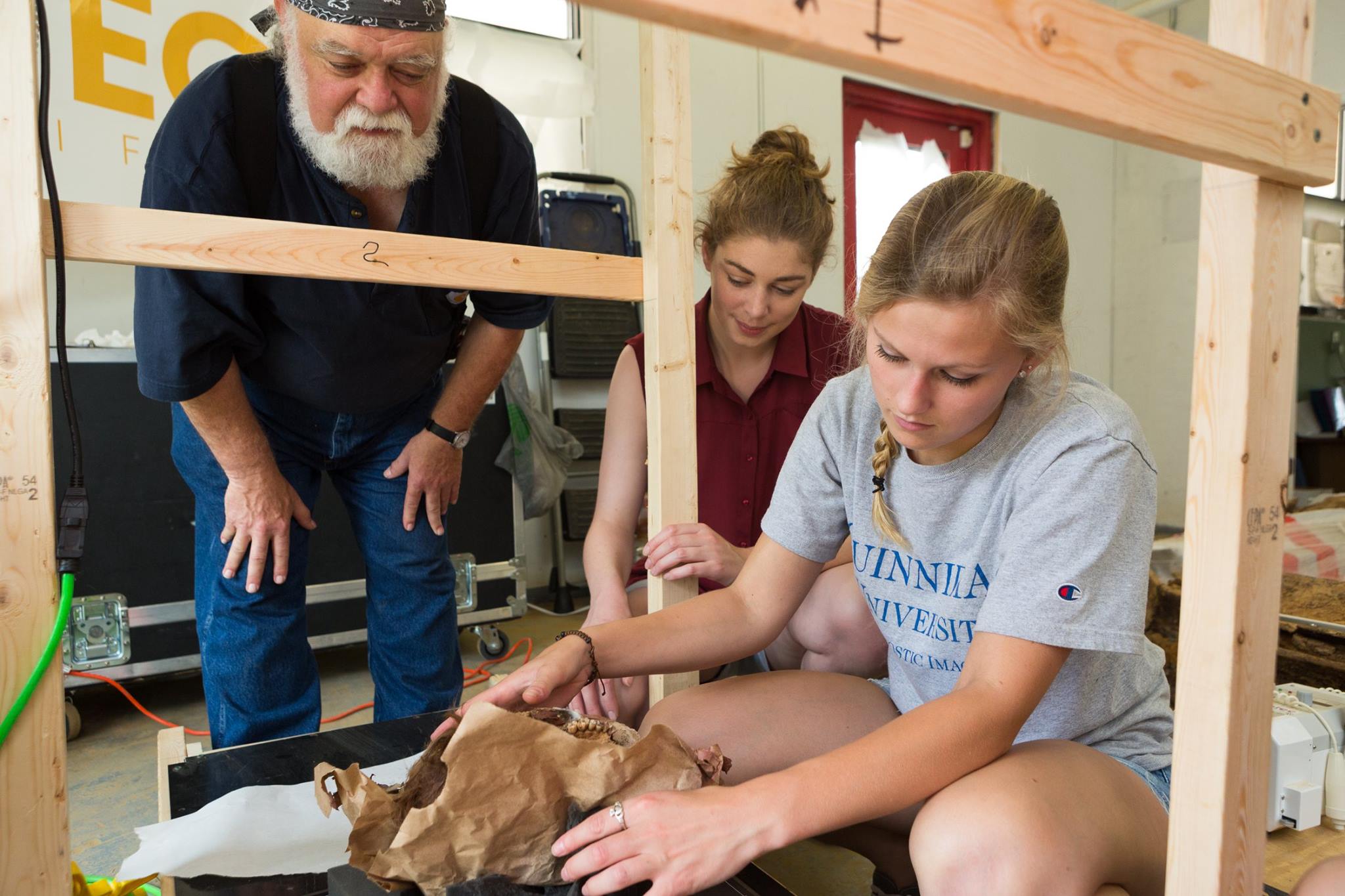A team of radiologic sciences students had the opportunity to apply the skills they developed in the classroom for something vastly different than disease diagnosis and treatment last month.
The Quinnipiac students traveled to Burlington, New Jersey with students from the University College Dublin, where they took X-rays of coffins and human remains dating as far back as the early 1700s. The coffins were a major archaeological discovery, and made national headlines when they were excavated from a construction site in the Old City neighborhood of Philadelphia in March.
“They are more than just boxes of bones,” said Gerald Conlogue, professor emeritus of diagnostic imaging and director of the Bioanthropology Research Institute at Quinnipiac. “They provide us with a picture of both a culture and a time period.” Conlogue, who led the trip, has been using medical imaging techniques to study mummified and skeletal remains and artifacts for decades. He has worked on archeological sites from Lithuania to Peru, and regularly brings students along on projects. “I want to broaden their perspectives, and show them that there are many other fields they can take their skills into,” he said.
Emily Paul ’18, a radiologic sciences major, recalls the excitement of arriving to find “artifacts everywhere,” a full skeleton being recovered by archeologists and state-of-the-art imaging equipment waiting for her.

